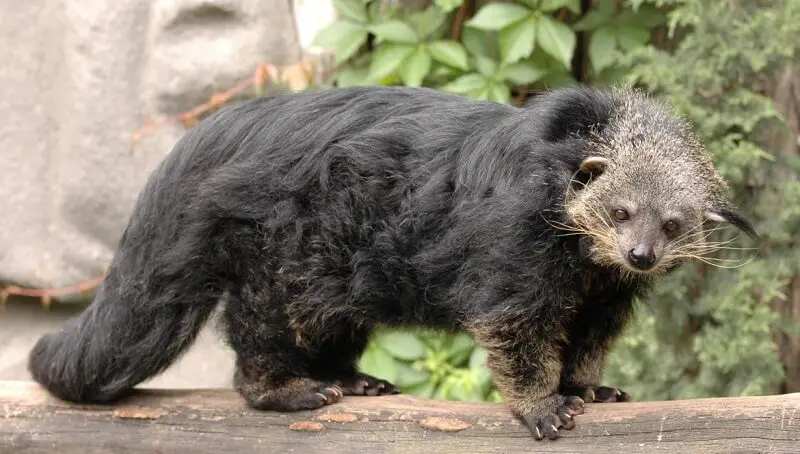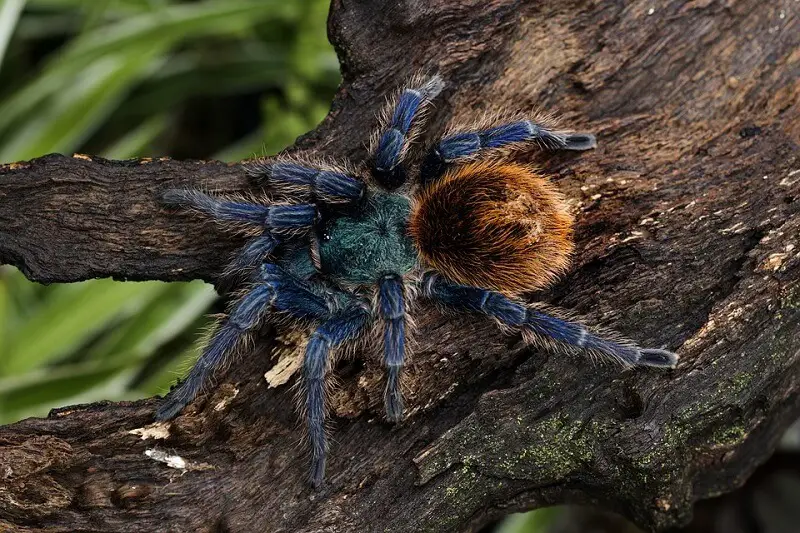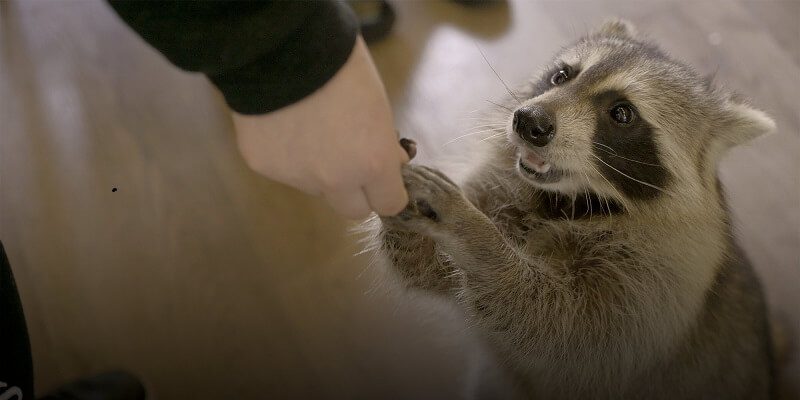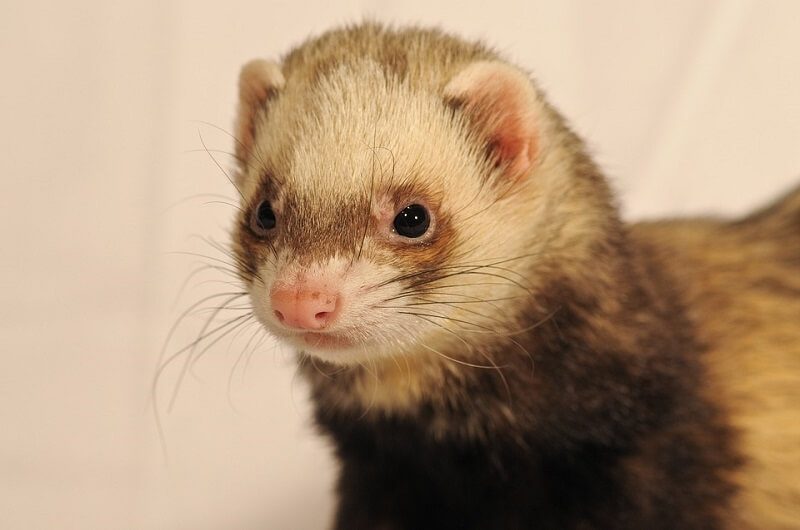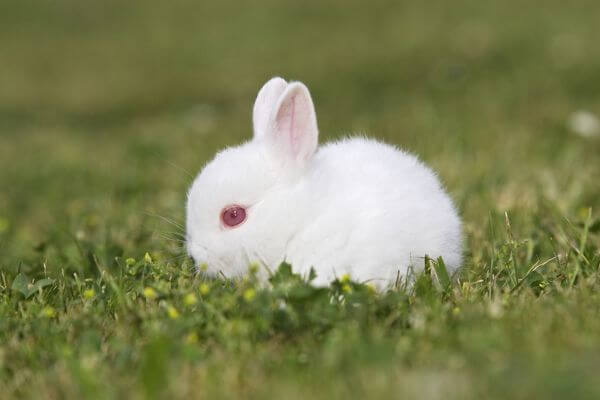Origin
The Binturong or “the bear cat” is part of the order of Carnivora, the family Viverridae. Binturong is found in South and South-East Asia. The wide range of distribution extends from Java Island in Indonesia to Yunnan in South China. Countries, where Binturong is located, include Nepal, Bangladesh, India, China, Indonesia, and Bhutan. Although they are still present in some countries, their number is rapidly decreasing, and now they are very difficult to find. They live in the wet and dense tropical jungle and in high forests that are close to water at altitudes of up to 400 meters. It is the only species in its genus.
The population has fallen by 30% in the last 30 years. The same family also includes the fossa, the civet, and the mongoose.
It can be found in foreign literature or specialty literature under the names: The binturong, bearcat, bear cat, benturong, tenturun. I have also seen the name of bintorong.
Binturong food
The bearcat is an animal that eats with pleasure. It is more of a greedy animal. Because it moves slowly and is lazy just like a cat or a bear, it also likes to eat and rest. One of its favorite moments is when it sits quietly without being disturbed. It’s an omnivorous animal.
Its food is made of fruits and animals. It is a great consumer of fruits, tree sprouts, and various plants. When it comes to animals, they descend from the tree and go hunting through the low vegetation. They hunt small animals, rodents, birds, or insects. They also like to eat fish. It’s a good swimmer who dives after fish. The binturong likes it so much that it eats it almost entirely.
Compared to other cats, the binturong is not a strict hunter. It eats more fruit. Figs make up most of its diet. In captivity, it is fed with fruit salad which includes peaches, bananas, apples, oranges, etc.
You might also like my articles with interesting facts about the capybara, proboscis monkey, or Narwhal.
Despite its relatively small size, it has a very strong bite.
Binturong aspect
It has a body length of 60 to 95cm and weight from 10 to 14kg. The body is covered with long, bushy fur of dark gray-black color.
The head is large, the ears are small and round, the muzzle is elongated and the nostrils are black. The eyes are small with a dark color. The legs are not long, but strong and end with strong paws and large claws just like a bear. The prehensile tail is almost as long as the body. Females are 20% larger than males.
Subspecies:
- b. Binturong – from Malacca to Thailand and Tenasserim;
- b. Albifrons – in Himalayas, north of Myanmar and Indochina;
- b. Penicillatus – lives in Java
- b. White – lives in Palawan, Philippines;
- b. Pageli – lives in Borneo;
- b. Gairdneri – lives in Thailand;
- b. Niasensis – lives in Sumatra;
- b. Kerkhoveni – lives in Bangka Island;
- b. Memglaensis — Yunnan Province,
The binturong is an arborical species
With the forelegs, it catches itself around the trunk of a tree, and with the help of the prehensile tail and the claws of its strong paws, it climbs relatively easily to its branches. Then it usually moves slowly from one branch to another. It never jumps like other species of tree animals that belong to the same order.
Binturong behavior
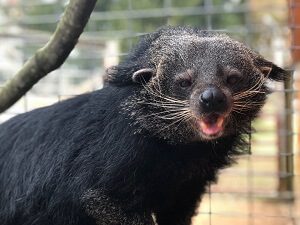 These very cute animals can also be raised as pets because they can be tamed quite easily. The binturong is appreciated for its intelligence and curiosity.
These very cute animals can also be raised as pets because they can be tamed quite easily. The binturong is appreciated for its intelligence and curiosity.
This creature spends most of its time in trees. They climb relatively easily using their claws. Unlike some species of animals that spend time in trees, they do not jump from one branch to another. During the day, it prefers to sleep curled on thick tree branches.
They also dive and swim well in water, when looking for fish that they always eat entirely, with pleasure and greed. It moves quite slowly and heavily like a bear, and its bite is very strong.
Males are very territorial. Both males and females mark their territory through strong smelly urine and feces. They are active animals both during the day and at night, but they prefer the night. They usually don’t get too far away from their house, not for more than 5 miles. Males do not overlap their territories more than 50%.
Besides man, the greatest natural enemies of a binturong are tigers, leopards, and pythons. Adult binturongs are also hunted by men for meat, trade, or medicine. Normally, the bearcat is shy and avoids noise, but if it is provoked it can be dangerous. It uses its powerful claws and bites to defend itself.
On hot days when even the shade is too warm, it goes to cool off in the waters of the rivers.
Reproduction
Although they can mate throughout the year, the most frequent mating period takes place in February – April and July – November. The fertile period of a female binturong lasts 81 days. Females are fertile until they reach the age of 15 years. The female generally gives birth to two cubs but can give birth to up to 6 babies. The male reaches sexual maturity at 18-24 months.
The gestation period lasts 3 months. After this period the female gives birth to 1-3 cubs that she breastfeeds for two months. At birth, they are born blind and deaf and depend on their mother. Unlike other wild cats, the male participates in raising the cubs.
In captivity, the binturong lives up to 22 years, but in the wild up to 10-15 years. The oldest binturong lived in captivity until the age of 25 and weighed 20 kg.
Binturong in relationships with people
This mammal is positioned as a passive animal. They were easy to tame by man. Around the world, they are often kept as exotic pets. However, this industry, along with other factors, has contributed to the rapid decline in the number of binturongs in Southeast Asia.
Binturong is also subject to the devastating loss of vast areas of its natural habitat. The growing human population and the clearing of forests for agriculture are the main culprits of their decline, as Binturong needs a dense jungle for successful survival.
Binturong brings great benefits to the forests and jungle they live in. Thanks to their feces, they help spread seeds from the fruits and vegetables they feed on. They also help fight pests, as they catch and eat rodents.
